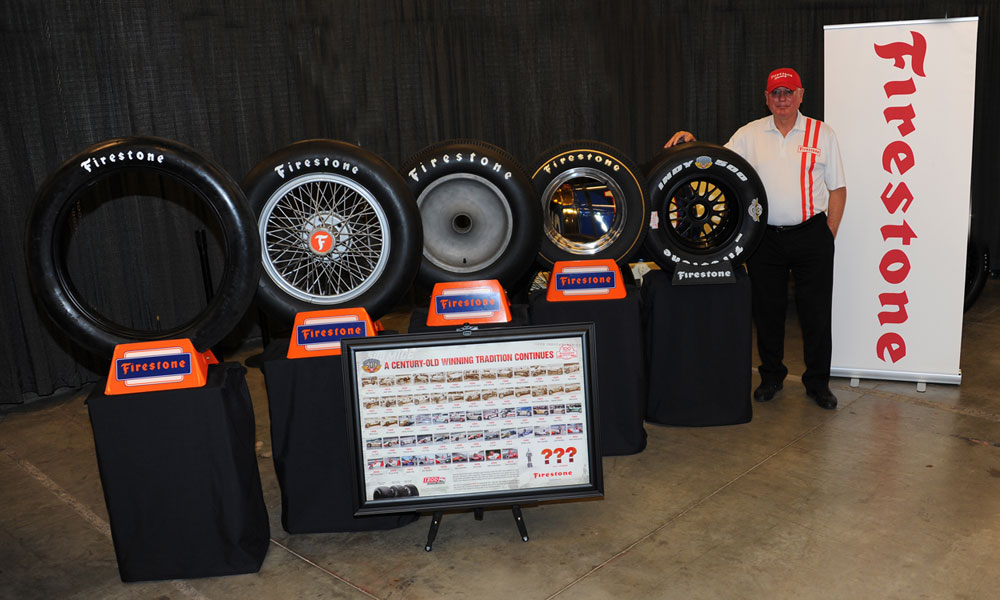Firestone Shows Off a Century of Indy 500 Race Tires
 |
| Al Speyer shows off history of Firestone racing tires |
No tire manufacturer can boast of the extensive and successful history that Firestone Racing has accumulated at the Indianapolis Motor Speedway. Firestone tires have carried more Indianapolis 500 Mile Race drivers to victory than all other tire makers combined.
To help commemorate the centennial anniversary of the first Indianapolis 500, Firestone is showing off its unique IMS legacy at the Firestone display garage next to the entrance to Gasoline Alley. A group of replica race tires that span Firestone's history at the Brickyard are on exhibit for public view.
"This one-of-a-kind tire display truly encompasses the entire Firestone history at the speedway, dating to the very first Indy 500 in 1911," said Al Speyer, Executive Director, Firestone Racing. "Ray Harroun won that initial race on Firestone tires, and with it began a winning tradition that continues for the Firestone brand 100 years later. We're proud to say that every competitor in this year's event is competing on the newest generation of Firestone race tires, and that when the checkered flag waves on May 29, Firestone will celebrate its 62nd Indy 500 victory. This is the most technologically advanced and sophisticated tire to carry cars around IMS. It is the finest Firestone product at the speedway in the 100-year history of the race."
Replica tires, produced from exacting measurements of the originals by Coker Tire, include:
* The Firestone "Gum-Dipped" fabric ply tire used by Harroun's Marmon Wasp to win the 1911 race;
* The Firestone "Balloon" tire popular in the 1920s and '30s;
* The Firestone "Deluxe Champion," a speedway staple for more than two decades into the early '60s;
* The 1965 Firestone "Indy" tire that ushered in a new era of purpose-built race tires with the rear tires larger than the fronts;
* The present-day Firestone Firehawk racing radial on which all drivers race today.
"It's fascinating to see these tires side-by-side," Speyer said. "That visual drives home just how much tires have changed over the years, going from a tall, narrow construction to today's significantly wider, much lower profile tires. We thought that race fans would enjoy seeing this important component of Indianapolis 500 history."
